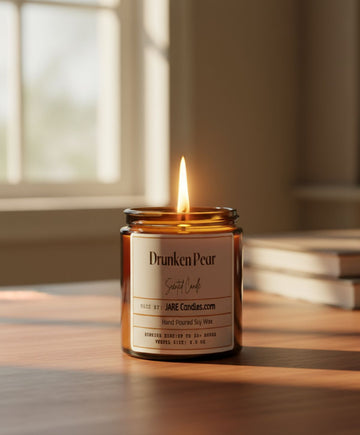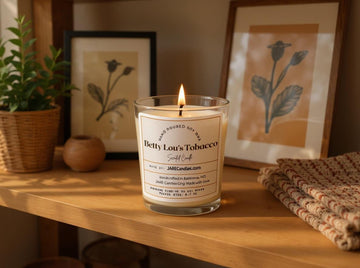A Cozy Glow with a Curious Flicker
Picture this: It’s a quiet evening, the lights are low, and the room is bathed in the soft glow of a candle. The flame dances gently—flickering like it’s alive. It’s beautiful, calming, and just a bit mysterious.
But have you ever wondered: why do candle flames flicker at all? Let’s explore the science behind that mesmerizing glow and how understanding it can enhance your candle experience.
The Basic Science of Candle Burning
🔥 The Combustion Triangle
Every candle flame relies on three things: heat, fuel, and oxygen. This trio is known as the combustion triangle. Remove one, and the flame goes out.
- Heat: Initiated by the match or lighter, it melts the wax.
- Fuel: The melted wax travels up the wick to feed the flame.
- Oxygen: Drawn from the surrounding air to sustain the reaction.
🕯️ How a Candle Burns
Once lit, a candle sets off a chain reaction:
- Wax melts and is drawn up the wick by capillary action.
- The liquid wax turns into vapor near the flame’s base.
- This vapor ignites, producing the light and heat we see and feel.
The Anatomy of a Flame
💡 Different Flame Zones
- Blue Zone: Closest to the wick, where combustion is complete and hottest.
- Yellow Zone: Mid-layer where combustion is incomplete—carbon particles glow here, creating the familiar golden flame.
- Dark Zone: A barely visible layer of unburned fuel just above the wick.
⬆️ Why Flames Always Point Up
It’s all about physics. Hot air rises, thanks to convection. Gravity pulls cooler air downward, creating a vertical airflow that shapes the flame into its iconic teardrop form.
Why Do Candle Flames Flicker?
🌬️ Air Movement
Even a gentle breeze can disrupt the balance of the combustion triangle. That’s why candles flicker more in drafty spaces. Outdoor burns? Expect more movement due to uncontrolled air currents.
🪵 Wick Factors
Not all wicks are created equal. The size, type, and condition of the wick affect flame behavior:
- Overly thick wicks can pull too much wax, creating unstable flames.
- “Mushrooming” (carbon buildup at the tip) can cause sputtering and large flickers.
- Trimming your wick to ¼ inch before each burn helps stabilize the flame.
🕳️ Wax Pool Behavior
Uneven melting or cold spots in the wax can cause fuel supply inconsistencies, making the flame flicker as it tries to adjust. This is why it’s best to let your candle burn until the wax melts fully across the surface.
Environmental Conditions Matter
☁️ Humidity & Air Pressure
High humidity can slightly smother a flame, while low pressure (like during a storm) can make it burn more aggressively. You may even notice seasonal differences in how your candles perform!
🪞The Role of Containers
Jars and holders can amplify or disrupt airflow:
- Heat reflects off glass or metal walls, intensifying the burn.
- Trapped heat may create mini air currents, leading to flickers.
What Candle Makers Can Do
🧪 Design for Flame Stability
- Choose the right wick for each wax and container combo.
- Use balanced soy wax blends (like the ones we use at JARE Candles).
- Test burn in various conditions to observe flame behavior.
📚 Educating Candle Lovers
At JARE Candles, we guide our community with tips to make the most of every burn:
- Keep candles away from vents or open windows.
- Always trim your wick.
- Let the melt pool reach the edges before blowing it out.
If your flame flickers wildly, it's trying to tell you something pay attention!
Conclusion: Burn Brighter with Knowledge
Now that you know the science behind a candle’s flicker, every burn can be more intentional. From combustion chemistry to wick care, each element plays a part in your candle’s performance.
Next time you light your favorite candle, observe its behavior you might just see science at work.
✨ Curious about more behind-the-scenes candle wisdom? Explore more candle care.
🧠 Expert Tips: How to Stop the Flicker
- Always trim your wick to ¼ inch before lighting.
- Avoid drafts by placing candles away from windows, fans, and vents.
- Watch for mushrooming and trim if needed.
- Let the melt pool reach edges before extinguishing to avoid tunneling.







